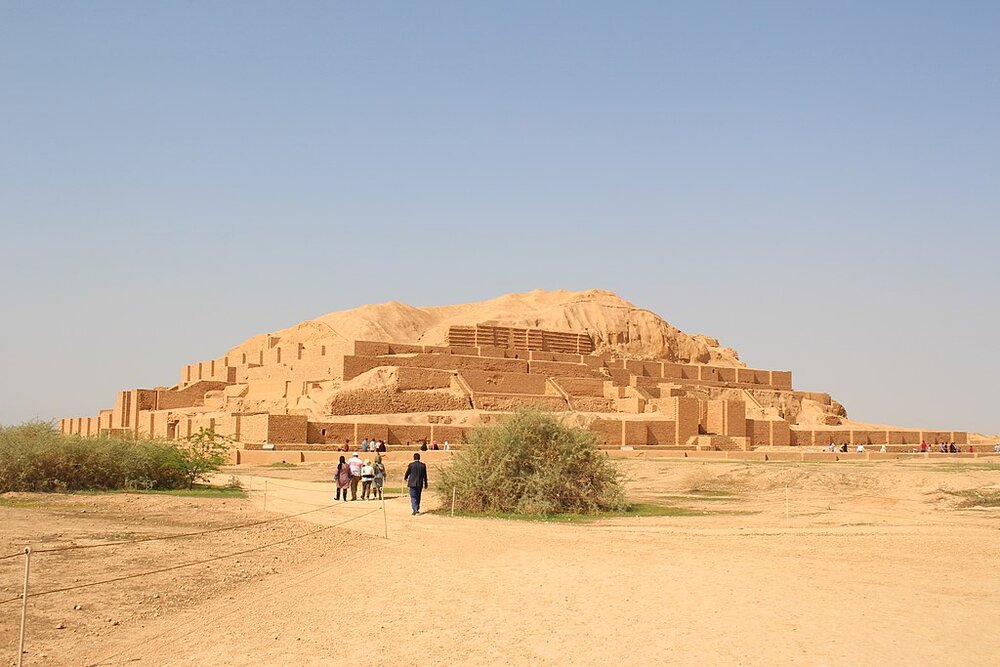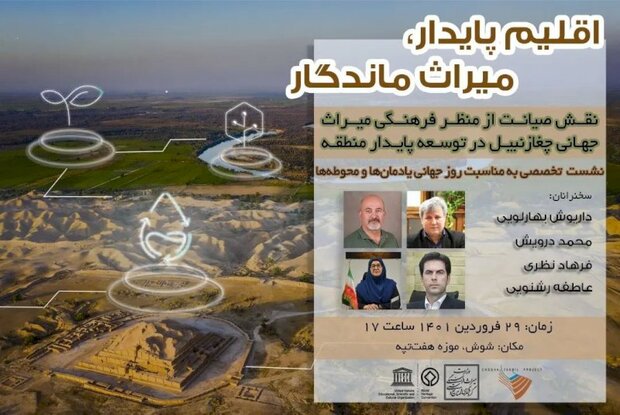Experts to examine impact of World Heritage on sustainable development

TEHRAN – Several cultural heritage experts and academia will examine strategies needed for the proper protection of Tchogha Zanbil and its impact on sustainable development around the UNESCO-registered site in southwestern Iran.
“The protection of Tchogha Zanbil and its impact on the sustainable development of the region is the main topic that will be discussed in the meeting,” CHTN quoted the director of the World Heritage site as saying on Sunday.
Titled “Sustainable Climate, Lasting Heritage”, the professional meeting will be held at Haft-Tappeh museum on Monday evening, Atefeh Rashnoei added.
"The role of protection from the cultural perspective of Choghaznabil World Heritage in the sustainable development of the region
“Moreover, the meeting is aimed to pave the way for achieving [regional] goals defined by the International Council on Monuments and Sites (ICOMOS),” she stated.
Furthermore, Rashnoei expressed hope that the outcomes of the event will be leading to more effective conservation of historical sites across Khuzestan province.
It is hoped such brainstorming sessions will help develop cultural tourism and its proper etiquette as well, the official explained.

A topmost tourist destination in Khuzestan province, the magnificent ruins of Tchogha Zanbil (Choghazanbil) are considered by many the finest surviving example of Elamite architecture on the globe. It was made a UNESCO site in 1979. Its construction started in c. 1250 BC upon the order of the Elamite king Untash-Napirisha (1275-1240 BC) as the religious center of Elam dedicated to the Elamite divinities Inshushinak and Napirisha.
UNESCO says that Tchogha Zanbil is the largest ziggurat outside of Mesopotamia and the best preserved of this type of stepped pyramidal monument. Tchogha Zanbil was excavated in six seasons between 1951 and 1961 by Roman Ghirshman, a Russian-born French archeologist who specialized in ancient Iran.
In addition, Haft-Tappeh (literary meaning “Seven Mounds”) is located 15 kilometers to the south of the ancient city of Susa, itself a highly significant archeological site in southwest Iran. Early excavations in Haft-Tappeh conducted by the late Iranian archaeologist Dr. Ezzatollah Negahban yielded a large number of petroglyphs bearing cuneiform inscriptions in Akkadian, belonging to Elamite kings. The petroglyphs contain information on the religious beliefs, trading methods, and the political, cultural, and social relations of the time.
AFM
